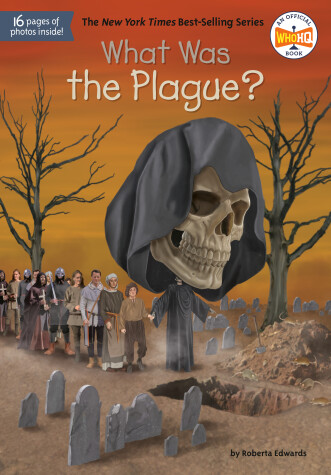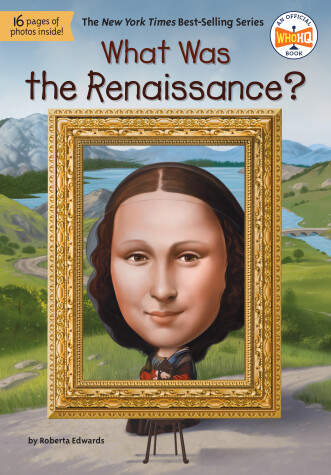What Was?
2 total works
Oh, rats! It's time to take a deeper look at what caused the Black Death--the deadliest pandemic recorded in human history.
While the coronavirus COVID-19 changed the world in 2020, it still isn't the largest and deadliest pandemic in history. That title is held by the Plague. This disease, also known as the "Black Death," spread throughout Asia, Africa, and Europe in the fourteenth century and claimed an astonishing 50 million lives by the time it officially ended. Author Roberta Edwards takes readers back to these grimy and horrific years, explaining just how this pandemic began, how society reacted to the disease, and the impact it left on the world.
With 80 black-and-white illustrations and an engaging 16-page photo insert, readers will be excited to read this latest additon to Who HQ!
While the coronavirus COVID-19 changed the world in 2020, it still isn't the largest and deadliest pandemic in history. That title is held by the Plague. This disease, also known as the "Black Death," spread throughout Asia, Africa, and Europe in the fourteenth century and claimed an astonishing 50 million lives by the time it officially ended. Author Roberta Edwards takes readers back to these grimy and horrific years, explaining just how this pandemic began, how society reacted to the disease, and the impact it left on the world.
With 80 black-and-white illustrations and an engaging 16-page photo insert, readers will be excited to read this latest additon to Who HQ!
Discover all there is to know about the Renaissance, the period in history that took Europe from the Middle Ages to modern times!
Beginning in Italy, the Renaissance was a cultural movement that spread throughout Europe and affected art, science, technology, politics, and thought. From the 1300s to the beginning of the 1600s, scholars started to question what they knew and looked to literature and historical texts to develop new ideas for why things were the way they were. In just a short amount of time, the foundations for European life were uprooted and examined, leading people, including Leonardo da Vinci and Michelangelo, to explore new ways of thinking and being. Readers will learn why the Renaissance was such a pivotal time in European history and how it still influences us.
Beginning in Italy, the Renaissance was a cultural movement that spread throughout Europe and affected art, science, technology, politics, and thought. From the 1300s to the beginning of the 1600s, scholars started to question what they knew and looked to literature and historical texts to develop new ideas for why things were the way they were. In just a short amount of time, the foundations for European life were uprooted and examined, leading people, including Leonardo da Vinci and Michelangelo, to explore new ways of thinking and being. Readers will learn why the Renaissance was such a pivotal time in European history and how it still influences us.

